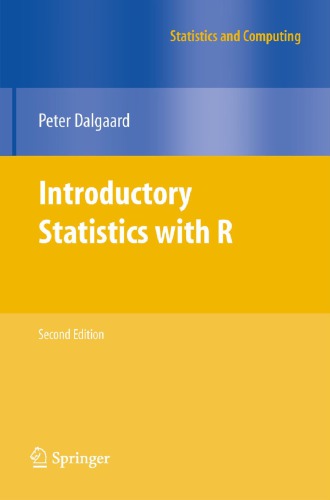

Most ebook files are in PDF format, so you can easily read them using various software such as Foxit Reader or directly on the Google Chrome browser.
Some ebook files are released by publishers in other formats such as .awz, .mobi, .epub, .fb2, etc. You may need to install specific software to read these formats on mobile/PC, such as Calibre.
Please read the tutorial at this link: https://ebookbell.com/faq
We offer FREE conversion to the popular formats you request; however, this may take some time. Therefore, right after payment, please email us, and we will try to provide the service as quickly as possible.
For some exceptional file formats or broken links (if any), please refrain from opening any disputes. Instead, email us first, and we will try to assist within a maximum of 6 hours.
EbookBell Team

5.0
98 reviewsR is an Open Source implementation of the S language. It works on multiple computing platforms and can be freely downloaded. R is now in widespread use for teaching at many levels as well as for practical data analysis and methodological development. This book provides an elementary-level introduction to R, targeting both non-statistician scientists in various fields and students of statistics. The main mode of presentation is via code examples with liberal commenting of the code and the output, from the computational as well as the statistical viewpoint. A supplementary R package can be downloaded and contains the data sets.
The statistical methodology includes statistical standard distributions, one- and two-sample tests with continuous data, regression analysis, one- and two-way analysis of variance, regression analysis, analysis of tabular data, and sample size calculations. In addition, the last six chapters contain introductions to multiple linear regression analysis, linear models in general, logistic regression, survival analysis, Poisson regression, and nonlinear regression.
In the second edition, the text and code have been updated to R version 2.6.2. The last two methodological chapters are new, as is a chapter on advanced data handling. The introductory chapter has been extended and reorganized as two chapters. Exercises have been revised and answers are now provided in an Appendix.